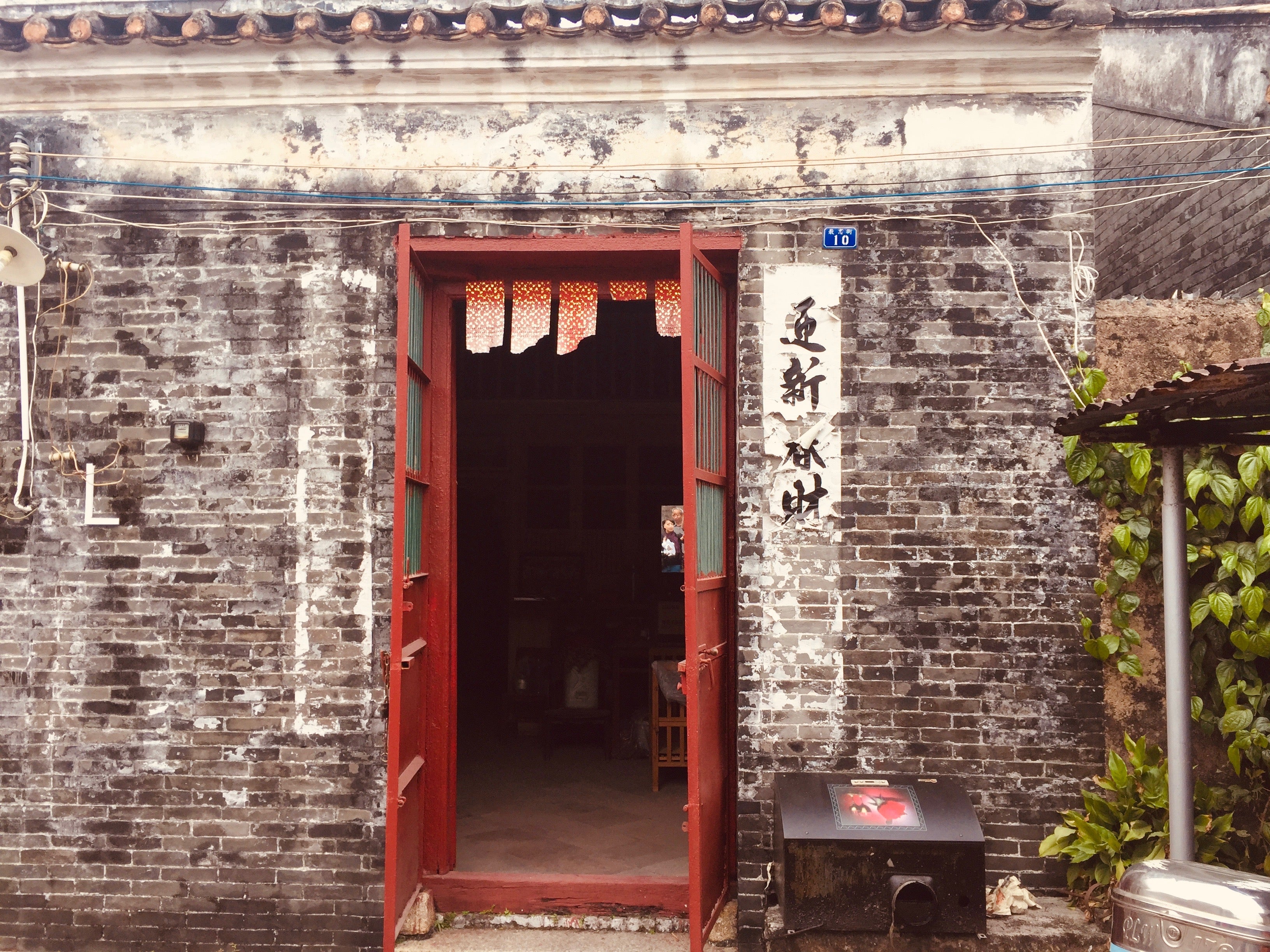
See Poy MAR's house, Shachong village, Zhongshan
In about 1850, See Poy Mar (馬社培)’s father built a small single-storey house in Shachong (沙涌) village, Zhongshan. See Poy grew up in this house before sailing for Sydney, via Hong Kong, in 1914.
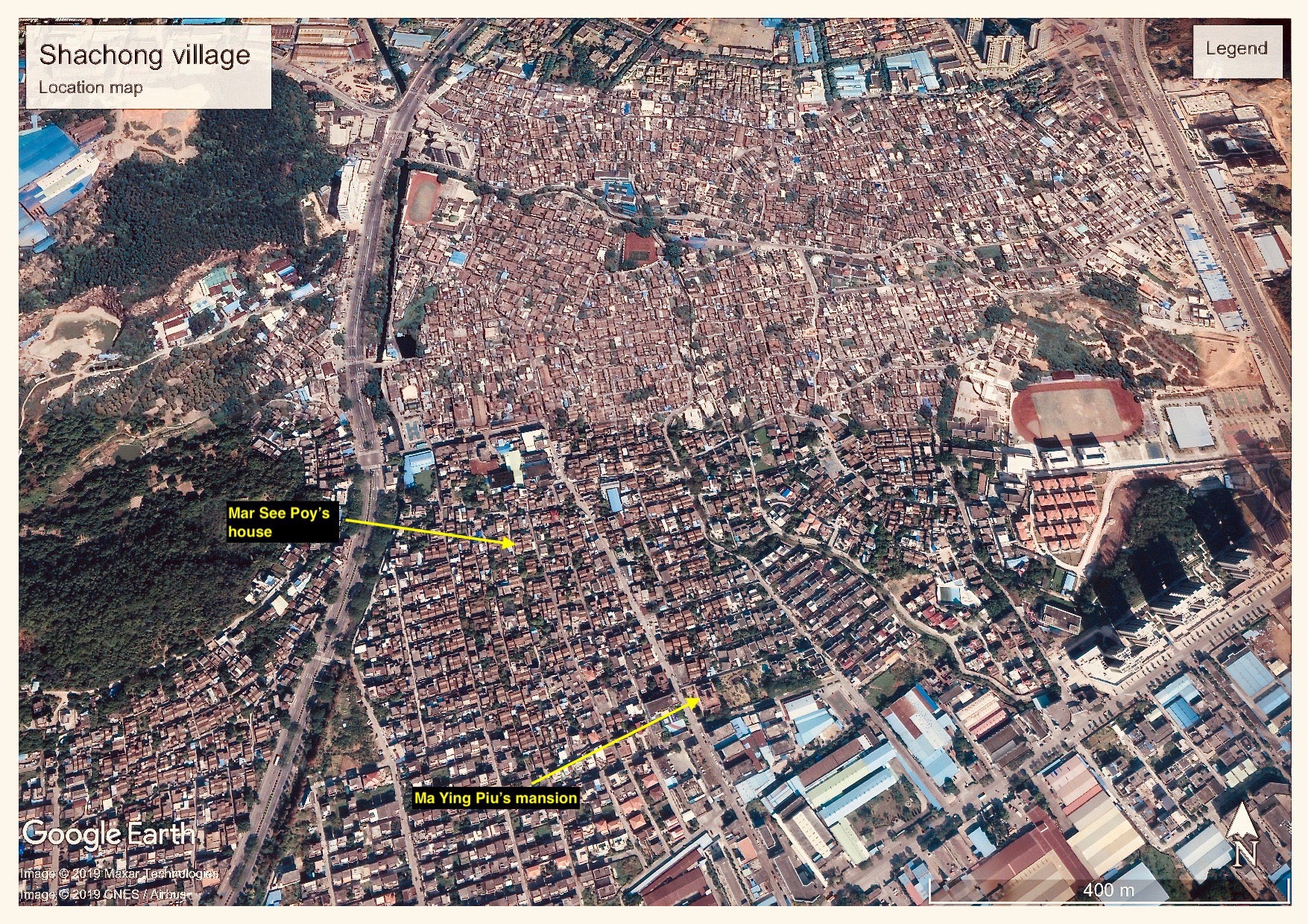
Location map of Shachong village, Zhongshan
The house is an example of the kind of modest dwelling that many of those who migrated to Australia from Zhongshan would have lived in prior to their departure. It contrasts with the larger, more elaborate houses built in the early decades of the 19th century with money earned in Australia.
See Poy’s wife joined him in Sydney after 1914 and they had a daughter together. See Poy worked in Sydney as a manager at Wing Sang & Co, the famous banana wholesaler and the forerunner of the Sincere department stores in Hong Kong and China. After his first wife died he married Daisy Yee. Their eldest son Raymond (馬勵文) was born in Sydney in 1923. In 1925 the family moved to Zhongshan and lived in the house See Poy’s father had built. See Poy died in about 1930. Daisy continued to live in the house with her three sons, Raymond, Arthur and James, and her step-daughter, until they all moved to Hong Kong in 1931. In 1938, Raymond was sent to Sydney and was joined in 1940 by Daisy, Arthur and James. Raymond married Bonnie Nee Ping in Sydney and they settled in Ryde where they raised their six children. Raymond died in 1997 without ever having returned to China.
The location of the house in Shachong was unknown to the children of Raymond until one of the children, Glenn Mar, asked the help of his friend, Douglas Lam, in finding it. Using his contacts in Zhongshan and through researching the archives Douglas was able to track down the house. In 2015 Glen and four of his siblings (including Western Sydney University academic, Phillip Mar), along with their elderly uncle James (Raymond's brother) and several of their relatives, made the trip to Zhongshan to visit Shachong village and their grandfather’s house.
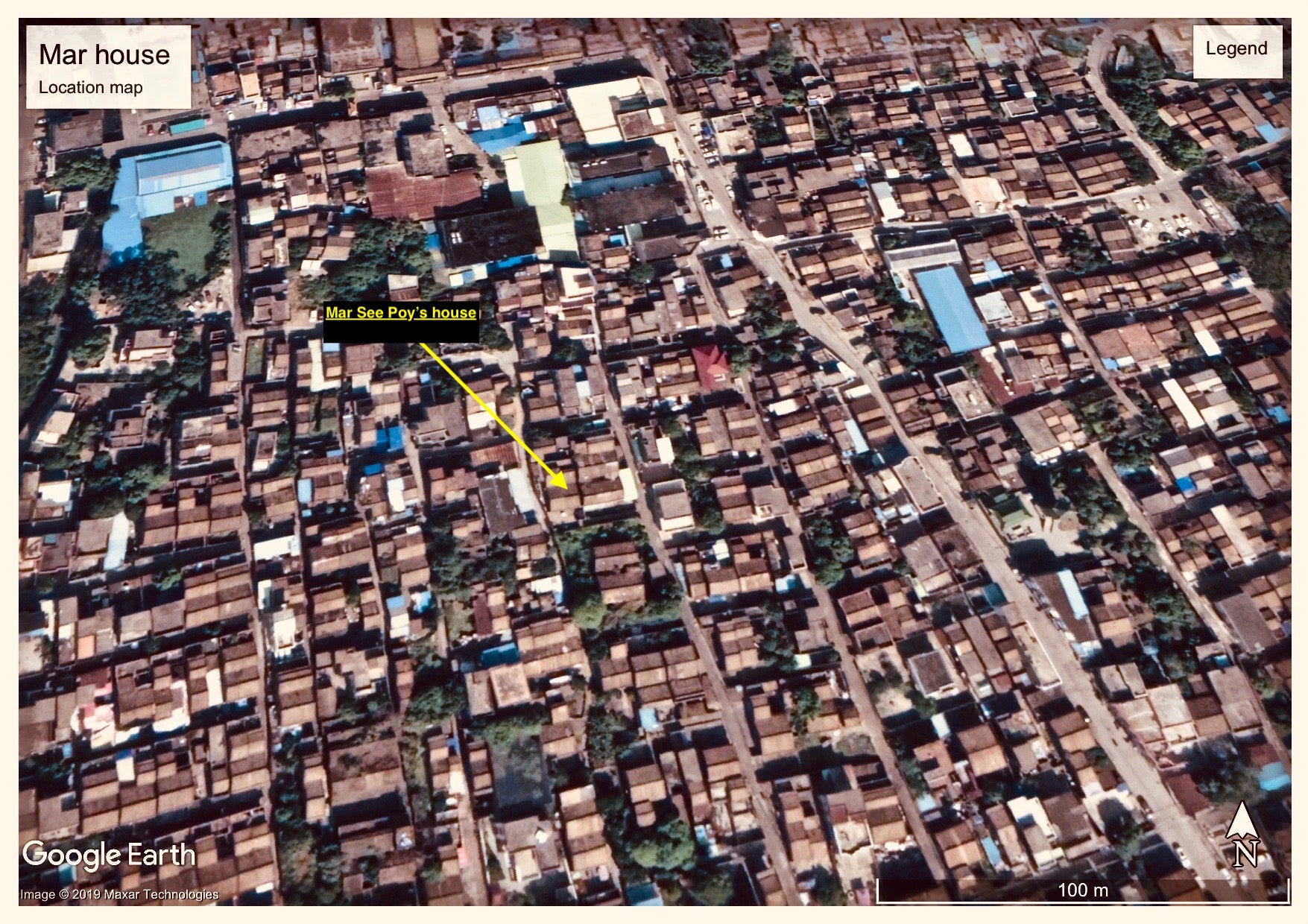
Location map of See Poy Mar's house in Shachong village
The house is located at the end of a small laneway in the village. It is connected with the house next door in duplex fashion (divided from it by a common wall in the middle).
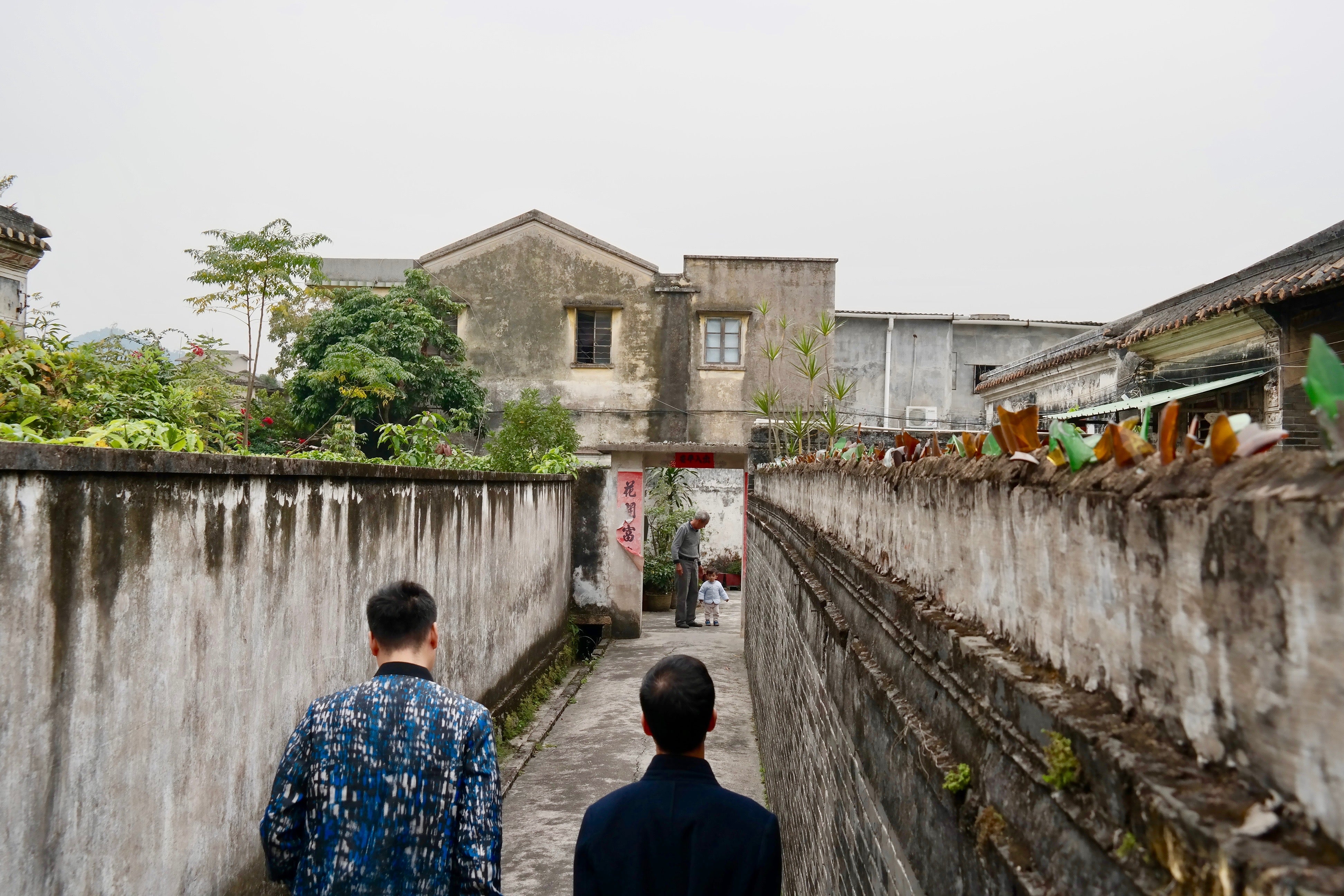
The laneway leading to the house
The house is built of grey brick and has a traditional terracotta tile roof. As with the house next door, the Mar family house has a central doorway in the façade but no front windows (the doorway is the only natural source of light). The two rooms of the house, one behind the other, span the whole width of the house. The rooms are separated by a wooden screen which can be passed through via a doorway. Above this door is a panel onto which is painted the scene of a river being crossed by a small steamship.

The doorway of the house (2017)
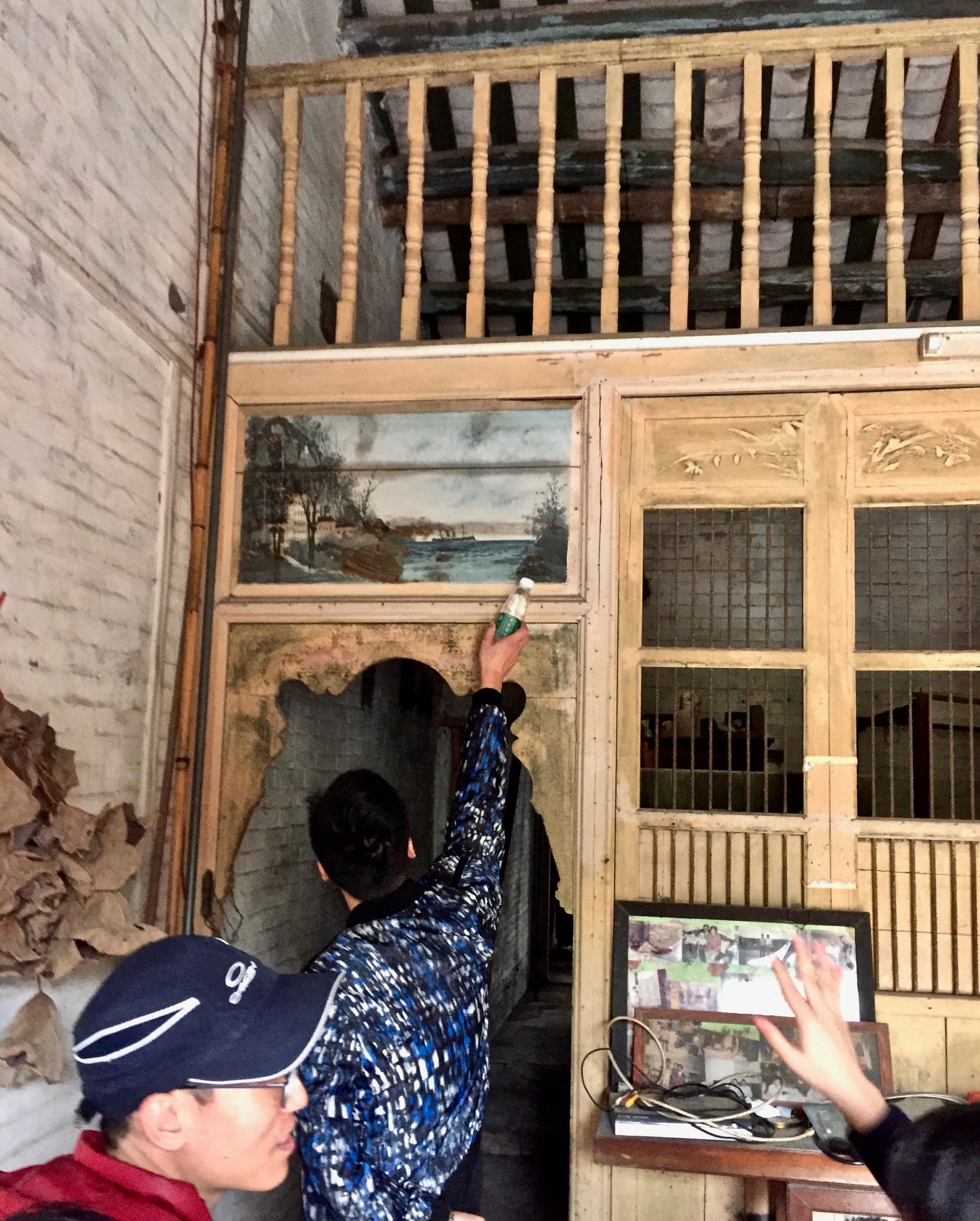
The wooden screen-wall showing the panel-painting above the doorway (2017)
The house has been vacant for a long time and the wooden beams are infested with termites. It is now being used for storage. Glenn’s uncle James, who had not returned to China after leaving in 1940, recalled that the house had originally contained redwood and rosewood furniture, all of which is gone.
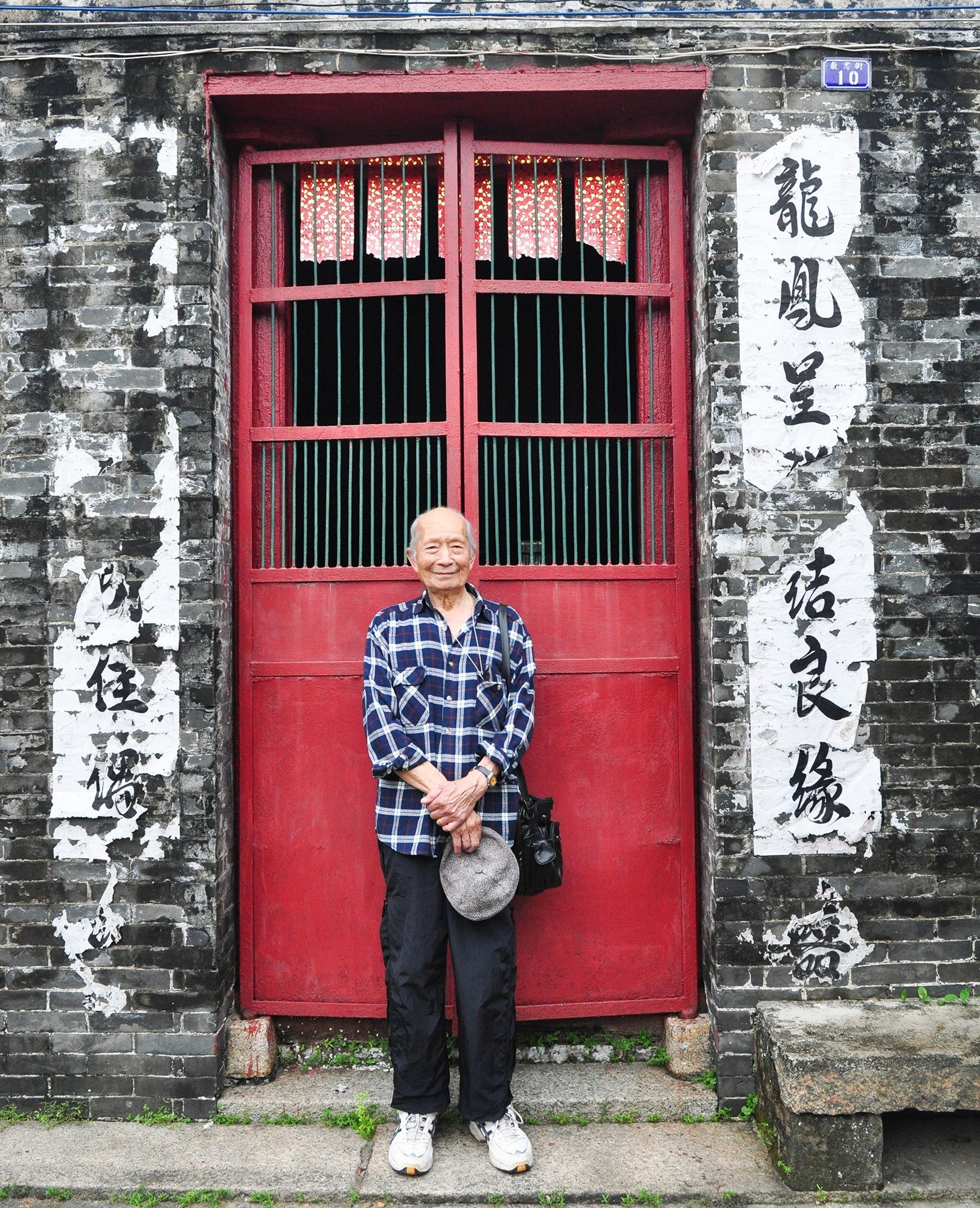
James Mar standing in front of his ancestral house in Shachong village (2015) (courtesy of Glenn Mar)
The experience of visiting the house was an emotional one for the family, especially for James Mar who had memories of living there as a child (James passes away in 2017). In 2017 Glenn Mar and his children revisited Shachong in order to pay their respects at the grave of their grandfather, See Poy, which had only recently been located.

Glenn Mar and his family revisited the ancestral house in Shachong in 2017 (courtesy of Glenn Mar)
